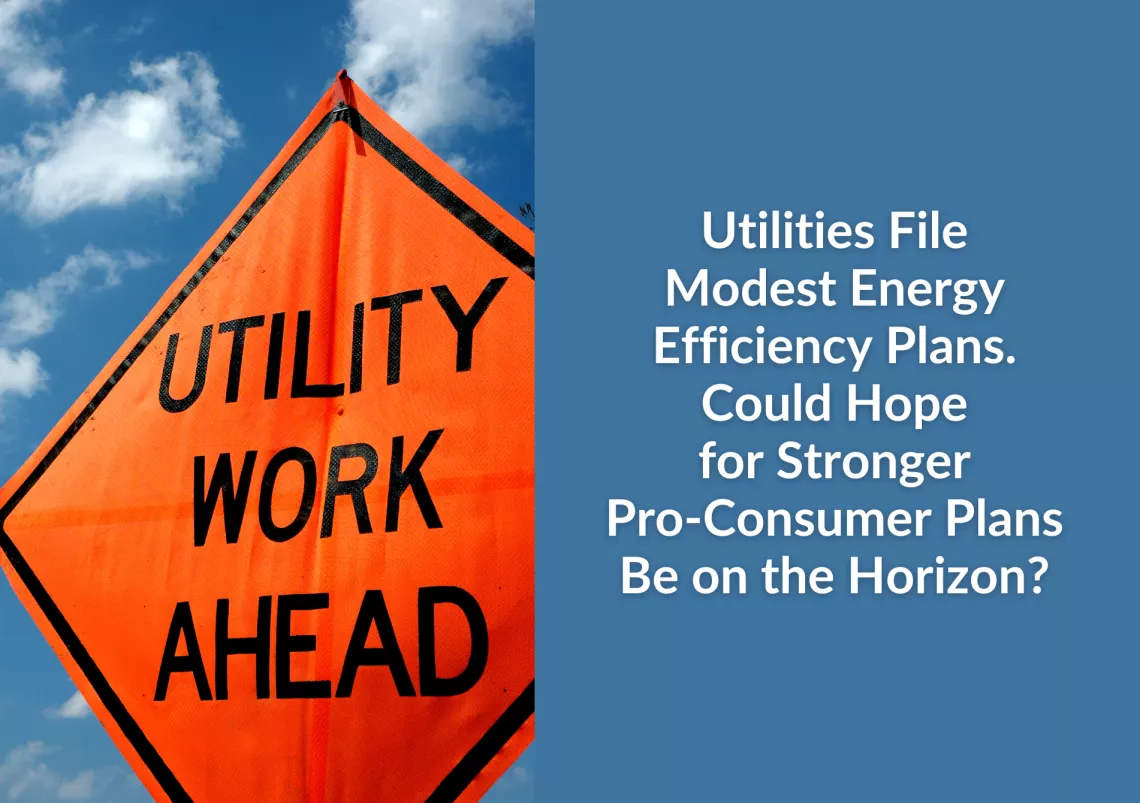
Image via Canva Pro: dvan
By Cyrus Reed
Every year, the eight private transmission and distribution utilities (TDUs) in Texas are required to submit their plans for energy efficiency and other energy savings programs for residential and commercial electric customers. These plans – known as Energy Efficiency Plans and Reports (EEPR) – were due April 1. Every single utility – four within ERCOT and four outside ERCOT – met their obligations. While the plans aren’t gospel – they can change – they indicate how much money and what programs the utilities are planning to offer in 2024 and 2025.
So what do these plans show? Are these utilities going to do a lot more to fix our grid with the most affordable, consumer-friendly solutions? Not really, though we have a bit of hope as the Public Utility Commission of Texas finally began asking stakeholders, the utilities and the public what they thought could be changed in a filing this week. (See below)
Utilities are not planning major efficiency expansions, despite rising energy costs and grid challenges... and rising profits.
The eight utilities are, for the most part, planning to invest similar amounts of money and save similar amounts of peak demand and overall energy in 2024 as they did in 2023. In 2025, collectively there is a slight increase in investments planned from roughly $141 million to nearly $152 million, representing a roughly 7.5 percent increase. (Note that these totals do not include performance bonuses – basically ratepayer money that would go directly to the utility for exceeding the state’s very modest goals). Overall, peak savings and energy savings rise slightly, though only about 2 percent. The vast majority of this 2024-2025 increase in budget is due to Oncor increasing the budget for its residential programs, and Centerpoint increasing the budget for its commercial programs. Several important pilot projects and efforts are also underway which the Sierra Club supports, including a smart thermostat demand response program being developed by Oncor with support from retail electric providers, several efforts to look at electric vehicle charging, and increased attention to heat pumps. Centerpoint Energy is also beginning an energy savings potential study.
Still, given the increasing electricity costs on Texas consumers, the clear direction from the Legislature is to increase demand response for residential consumers, as well as the direction from the PUCT to increase the efficiency of energy efficiency programs as part of the Blueprint approved in 2022, the plans fall well short of what the Sierra Club, its advocates and many other stakeholders have been calling for. There’s just not enough investment across the board, especially in light of recent reports by our friends at TEPRI – who in a survey of more than 6,600 electric customers – found that affordability emerges as a primary concern. Reducing energy waste is a key way to address concerns about unaffordable energy bills as well as grid resiliency.
And these entities are making money. Whether inside or outside ERCOT, utilities like Oncor and Centerpoint Energy, Entergy Texas, and AEP Texas have near guaranteed rates of return and are making hundreds of millions in profits. Oncor made a profit of $864 million in 2023, while AEP Texas made over $300 million in profits for shareholders, and Centerpoint Energy made $867 million for its shareholders in 2023. Ratepayers pay for the energy savings programs, but it seems that utilities that make money by moving electricity on their transmission and distribution lines may not want to invest too much money in reducing that use, which can reduce those profits to shareholders!
However, there is a glimmer of hope. This week, just a day after Sierra Club filed comments expressing our disappointment with the very modest changes contemplated in the filings, the PUCT officially began what is often the first step in rulemaking – opening a new docket and asking questions. Under the new docket – Project No. 56511, Review of Energy Efficiency Planning – the PUCT is expressly asking stakeholders what, if anything, should change about the programs, including peak demand and savings goals, performance bonuses, low-income programs and other aspects, including how to increase residential demand response. Under the filing, stakeholders are asked to respond by noon on May 23, 2024, with a length of up to 15 pages.
Asking questions is a good first step, though not enough.
For years, Sierra Club and many other affordability advocates have argued that utilities should be required to do more. In fact, in 2022, following the tragedy that occurred with Winter Storm Uri the year before, the Sierra Club brought a “petition for rulemaking” to the Public Utility Commission of Texas to raise the peak demand and energy savings goals, lower performance bonuses, and ensure utilities offered both winter and summer programs, among other proposed changes. Our petition was denied, though then-Chair Peter Lake said it’s “not no, but when” and that the PUCT would take up the energy efficiency programs later.
We are still waiting.
In 2023, we went to the legislature and worked very closely with Senators Eckhardt and Menéndez, and Rep. Rafael Anchia to introduce legislation to increase both energy savings goals and encourage the development of residential demand response. While Sen. Eckhardt’s bill to increase energy efficiency utility goals to one percent of total residential and commercial sales passed the Senate, it got stuck in the House, largely due to opposition from the TDUs. Sen. Menéndez’s bill to establish goals for peak demand reduction passed the Senate and got stuck in the House, but a version of the bill was incorporated into a similar bill by Sen. Nathan Johnson: SB 1699, which requires the PUCT to set new goals for residential demand response and encourages utilities to include more residential demand response programs in their portfolios.
It is also worth noting that the PUCT held a series of workshops on energy savings and demand response programs, hired a new Director of Energy Efficiency, and made improving the energy efficiency programs part of the “Blueprint” for improving the ERCOT grid. Recent information provided by ERCOT has shown that sudden shifts in weather that create challenges for the grid lead to particularly high demand from small business and residential customers. We are pleased that the PUCT has opened up a project to review energy efficiency planning, but we want to make sure that is followed by robust rulemaking to implement SB 1699 and other improvements in the required energy efficiency programs before utilities finalize their plans for the 2025 calendar year, as utilities will file their EECRF (Energy Efficiency Cost Recovery Factors) over the next month.
Just the facts: What’s in the filings?
While $151 million in 2025 might seem like a lot of money, it is split between eight utilities and between residential and commercial customers. It is a very modest investment in energy savings programs. Funding for the hard-to-reach population – essentially Texans at 200% or lower of the federal poverty level – has remained flat and even sees a slight decrease in 2025 compared to 2024 despite rising electricity costs.
Overall, expected peak demand reduction rises slightly to 587 MW, but again that’s a tiny percentage of overall peak demand. In terms of overall energy consumption, expected utility achievements of 685,000 MWh are still at roughly one quarter of one percent of overall energy use. Put simply, at a time when these utilities are making lots of money off hard-working Texans (and in some cases, have rate cases to increase costs on consumers for things like increased transmission and distribution) they seem unwilling to charge ratepayers a little bit more to increase budgets for programs that directly help consumers save money.
Some positives… and disappointments…
Residential Demand Response
Utilities continue to offer relatively few residential demand response options. While we recognize and appreciate recent announcements by Oncor to begin a new pilot residential demand response program, in part in response to passage of SB 1699, and filings by TEAM and ARM, we are disappointed that other ERCOT utilities seem to be taking a slower approach. Centerpoint Energy has recently expanded demand response into both summer and winter, but again seems to offer relatively little for residential consumers. Neither TNMP nor AEP appear to be moving into residential demand response programs in the near-term or even in 2025, though we appreciate they are still looking at options. We also recognize that AEP has moved into a program to install residential smart thermostats in multi-family housing, which could pave the way for future programs.
Heat Pumps and Water Heat Pumps
Most utilities offer some kind of incentive for heat pumps and water heat pumps, but we notice that Centerpoint refers to “non-electric” water heating which may indicate that they do not provide these incentives for water heat pumps. TNMP appears to have no programs for heat pumps, which is surprising given the need to reduce electric resistance heating loads. Still, the budgets for both ERCOT and non-ERCOT utilities seems surprisingly low given the obvious loads caused by heating water and space. It could be that utilities are waiting to see how expected federal funding through the State Energy Conservation Office impacts these programs but increasing budgets in 2024 and 2025 could help thousands of Texans while we await federal funding opportunities.
Smart Thermostats
Most utilities are now covering – at least for low-income households – incentives to install smart thermostats, and this is an important first step in better controlling heating and cooling. Thus, AEP Texas and Entergy for example have started new programs to bring more smart thermostats into Texas homes and apartments. However, unless ultimately paired with demand response programs and education, savings may be limited.
Solar Plus Storage
We appreciate that both Oncor and AEP are now offering rebate programs that encourage users to pair solar with battery storage technology, and that Centerpoint is moving to study how to increase the use of distributed energy resources (DERs) (including solar plus storage) as part of its research program. Still, many utilities are choosing not to incentivize solar or solar plus storage which is surprising given the ability of this technology to reduce bills, and the availability of federal tax incentives which can lessen the costs for consumers. We are particularly surprised that the non-ERCOT utilities do not appear to be offering more to encourage consumers to invest in solar since it can lower their need to build new generation.
Energy Audits
Too few Texans have an understanding of what cost-effective energy efficiency improvements would help them lower their bills. Should attic insulation come first? Weatherstripping? Duct sealing? Energy audits are crucial for Texas families making informed decisions. However, utilities do not generally offer energy audits since there is no direct attributable savings as part of the audit itself, but we believe that exploring audits as part of other programs, or implementing a virtual auditing program for residential customers, could be a way to build out the programs. We will be offering additional written comments once utilities release their proposed EECRFs to help develop this idea.
Opportunities to coordinate federal funding with utility programs
Recently, the State Energy Conservation Office (SECO) announced that it plans to apply for $690 million in federal energy efficiency funding, and the EPA recently approved funding to several coalitions for more than $400 million in funding for onsite residential solar programs. We believe that as part of their 2025 EECRFs and plans utilities should investigate how to leverage this federal funding to bring more energy savings to Texas consumers. This is particularly important for hard-to-reach customers since these federal programs are focused in particular on residential consumers with limited incomes.
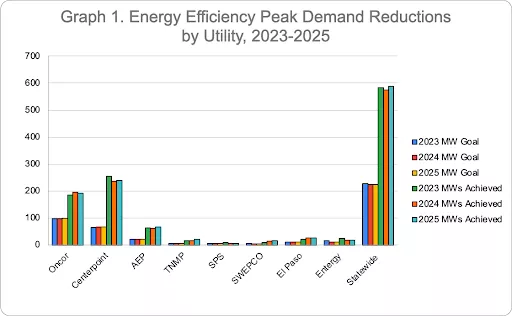
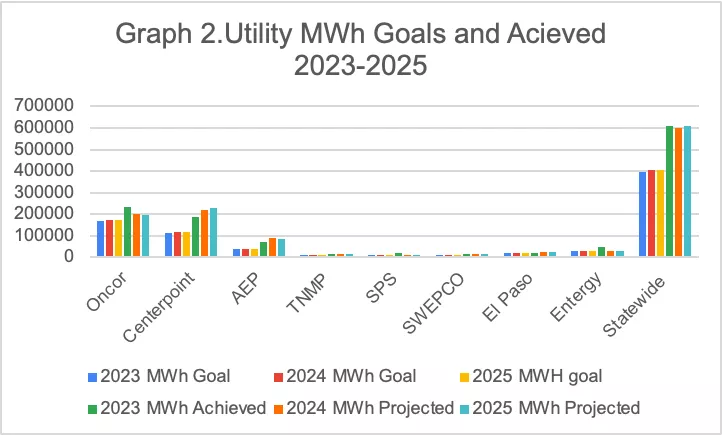
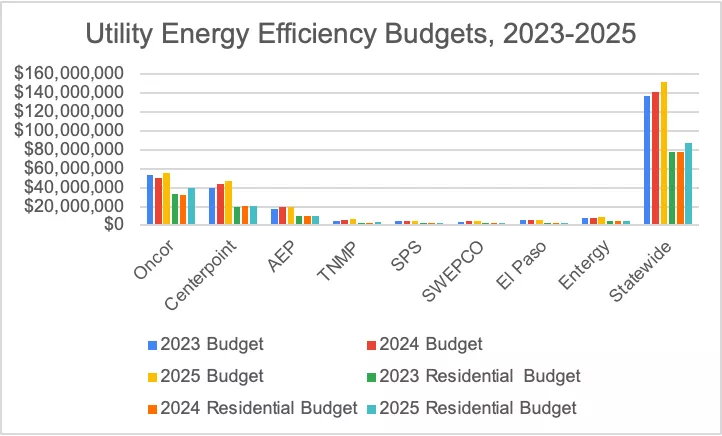
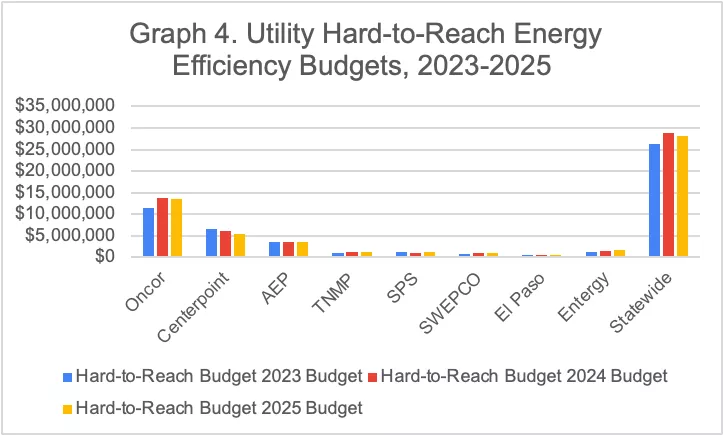
Conclusions – We must do better
Taken together, while a proposed seven- to eight-percent increase in TDU funding – and a very slight increase in peak demand and energy savings – could be cast in a positive light, the fact is that once again the eight TDUs have proposed plans that are nearly the same as in years past.
They can do better. We call on the PUCT, utilities, and other stakeholders to work together for the rest of the year to increase the offerings, money, and programs in 2025 to achieve greater peak savings in the winter and summer and reduce energy bills overall. The Sierra Club plans to file additional comments related to specific EECRF filings in the coming months and provide answers to the questions asked by the Commission in their recent filing. In the meantime, we call on the Commission to build on their new project on energy efficiency and demand response in which they asked for input on some basic questions, and open an actual rulemaking.
Sierra Club continues to believe that we can meet much greater goals – such as a one percent peak demand reduction and a one percent overall energy savings, phased in over several years to allow utilities to scale up their programs. We also are supportive of utilities offering both winter and summer programs and that the PUCT works with other agencies to ensure that federal funds are leveraged to the maximum amount possible, while giving utilities credit where appropriate for savings they help achieve.